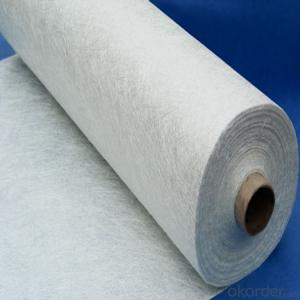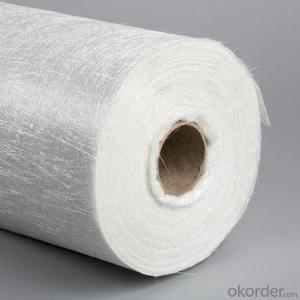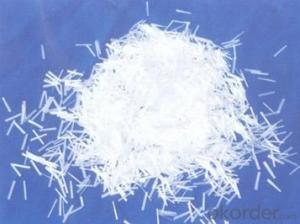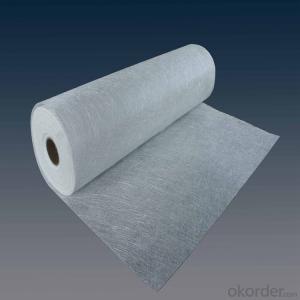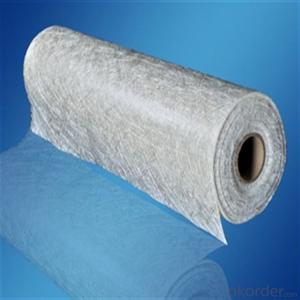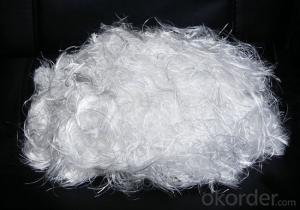E Glass Fiberglass Chopped Strand Mat
- Loading Port:
- China main port
- Payment Terms:
- TT OR LC
- Min Order Qty:
- 1 kg
- Supply Capability:
- 5000 kg/month
- Option:
- EWK300
OKorder Service Pledge
OKorder Financial Service
You Might Also Like
Item specifice
Product Description:
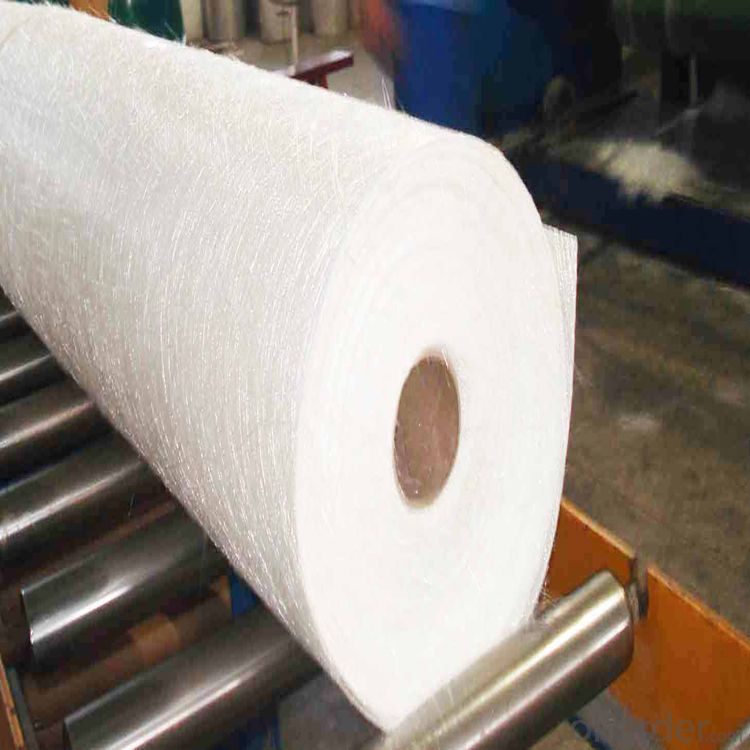
Surfacing Tissue mainly used in the surface layers of FRP products. It features even Fiber distribution, soft feel, level and smooth fiber surface, less glue content, quick resin soak and good pattern fitness. It can improve the product surface property on corrosion resistance, compressive strength, seepage resistance, and longer service life. It is also suitable for spraying; pattern pressing and other FRP pattern technology.
Surfacing Tissue mainly used in the surface layers of FRP products. It features even Fiber distribution, soft feel, level and smooth fiber surface, less glue content, quick resin soak and good pattern fitness. It can improve the product surface property on corrosion resistance, compressive strength, seepage resistance, and longer service life. It is also suitable for spraying; pattern pressing and other FRP pattern technology.
Product Features:
Fast breakdown in styrene
Fiber dispersed evenly
Low binder content
Superior acid corrosion resistance
Specifications:
Item | Over Density | Moisture Content | Chop Density | Polyester Yarn | Width |
(g/m2) | (%) | (g/m2) | (g/m2) | (mm) | |
EMK300 | 309.5 | ≤0.15 | 300 | 9.5 | 50-3300 |
EMK380 | 399 | 380 | 19 | ||
EMK450 | 459.5 | 450 | 9.5 | ||
EMK450 | 469 | 450 | 19 | ||
EMC0020 | 620.9 | 601.9 | 19 | ||
EMC0030 | 909.5 | 900 | 9.5 |
Product Packaging:
Each Surface Tissue is wound onto a paper tube which has an inside diameter of 76mm and the mat roll has a diameter of 330mm. The mat roll is wrapped up with plastic film,and then packed in a cardboard box or wrapped up with kraft paper. The rolls can be vertically or horizontally placed. For transportation, the rolls can be loaded into a cantainer directly or on pallets.
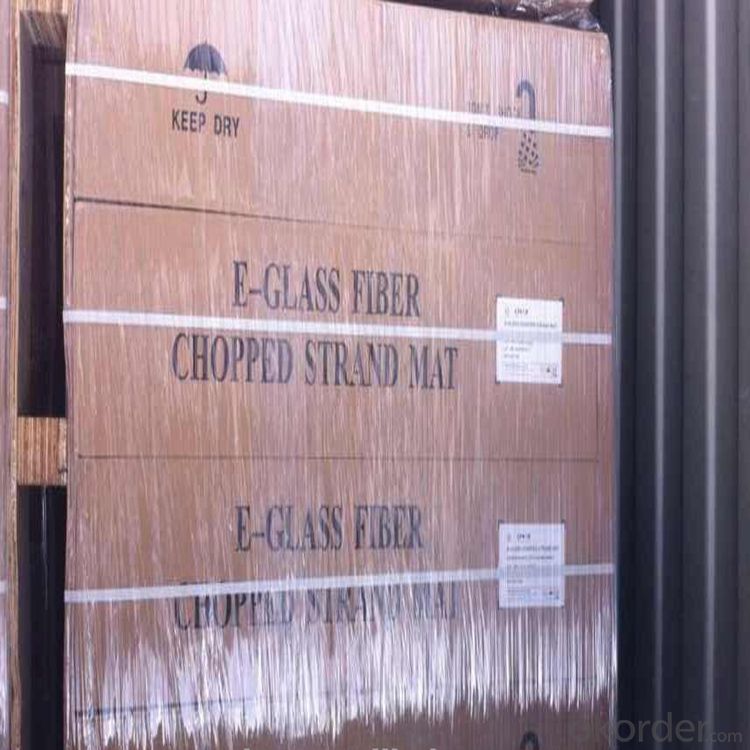
Product Storage:
Unless otherwise specified, Chopped Strand Mat should be stored in a dry, cool and rain-proof area. It is recommended that the room temperature and humidity should be always maintained at 15℃~35℃ and 50%~75% respectively.
Company Information
CNBM (China National Building Material) Group is the largest comprehensive building materials group in China that in integrate scientific research, manufacturing and logistics into one entity. The largest building materials and equipment specialists in China. Upon State Council approval, today CNBM owned more than 300 subordinate manufacturing factories and servicing companies. There are 6 fully owned public listed companies and 11 partially owned with substantial shares public listed companies. In many of these fields, CNBM is playing the leading role in the building industry in the country.

- Q:How is fiberglass chopped strand used in the transportation industry?
- Fiberglass chopped strand is extensively used in the transportation industry for various applications. One of its primary uses is in the manufacturing of composite materials for vehicles. Chopped strand mat (CSM) made from fiberglass is commonly used in the production of automobile body parts such as hoods, roofs, doors, and trunks. Fiberglass chopped strand mat provides excellent reinforcement properties, making it ideal for enhancing the structural integrity and strength of vehicle components. The fibers are randomly oriented and bound together with a binder, creating a mat-like material that can be molded into different shapes. This flexibility allows manufacturers to create lightweight yet durable parts that contribute to improved fuel efficiency and overall performance of vehicles. Additionally, fiberglass chopped strand is also used in the production of composite panels, interior components, and insulation in transportation vehicles. Due to its high strength-to-weight ratio, it helps reduce the overall weight of the vehicle while maintaining structural integrity. This weight reduction is crucial in the transportation industry as it directly impacts fuel consumption and emissions. Moreover, fiberglass chopped strand is highly resistant to corrosion, chemicals, and UV radiation, making it an excellent choice for exterior vehicle applications. It helps protect the vehicle's body against environmental factors and improves its longevity. In summary, fiberglass chopped strand is widely used in the transportation industry due to its reinforcement properties, lightweight characteristics, and resistance to corrosion and chemicals. It plays a crucial role in manufacturing composite materials that enhance the strength, durability, and performance of vehicles while reducing their weight and environmental impact.
- Q:How does the fiber dispersion affect the surface finish of chopped strand composites?
- Fiber dispersion refers to the distribution and orientation of individual fibers within a composite material. In chopped strand composites, the fibers are randomly distributed and oriented in various directions. The level of fiber dispersion has a significant impact on the surface finish of the final composite product. When the fibers are well dispersed, meaning they are evenly distributed and oriented, the surface finish of the chopped strand composite tends to be smoother and more uniform. This is because the fibers are able to fill the resin matrix more effectively, resulting in a more homogeneous structure. The smooth surface finish is desirable for applications where aesthetics or smoothness is of importance, such as in automotive or consumer products. On the other hand, poor fiber dispersion leads to uneven distribution and orientation of fibers within the composite. This can create areas with high fiber concentration and other areas with low fiber concentration. As a result, the surface finish of the chopped strand composite becomes rougher and more irregular. The presence of fiber clusters or voids can also lead to surface defects such as pitting or waviness. In addition to affecting the surface finish, fiber dispersion also influences the mechanical properties of the composite. Well-dispersed fibers provide better reinforcement, leading to improved strength, stiffness, and impact resistance. On the contrary, poor fiber dispersion may result in weaker areas with reduced mechanical performance. To achieve a desired surface finish in chopped strand composites, it is important to ensure proper fiber dispersion during the manufacturing process. Techniques such as mechanical mixing, spray-up, or injection molding can be employed to enhance fiber dispersion and promote a smooth and uniform surface finish.
- Q:Is fiberglass chopped strand compatible with silicone resin?
- In general, silicone resin and fiberglass chopped strand are compatible. Silicone resins are renowned for their exceptional adhesion properties and ability to bond effectively with diverse materials, including fiberglass. The compatibility between the two relies on factors like the precise type and formulation of the silicone resin, as well as the surface treatment of the fiberglass. It is advisable to perform compatibility tests or seek guidance from the manufacturer to guarantee suitable adhesion and performance while utilizing fiberglass chopped strand with silicone resin.
- Q:What are the typical curing conditions for fiberglass chopped strand composites?
- The typical curing conditions for fiberglass chopped strand composites may vary depending on the specific application and desired properties. However, there are some common factors that are typically considered during the curing process. Firstly, temperature plays a crucial role in the curing of fiberglass chopped strand composites. Generally, the curing temperature ranges from 100°C to 180°C (212°F to 356°F). This temperature range allows for the effective activation of the resin matrix, leading to the desired strength and durability of the composite material. The curing time is another important factor. The duration of the curing process is influenced by various factors such as the type of resin used, the thickness of the composite, and the desired properties. Typically, the curing time may range from a few minutes to several hours. It is essential to ensure that the composite is exposed to the curing conditions for the appropriate amount of time to achieve optimal results. Pressure is also considered during the curing process. Applying pressure to the fiberglass chopped strand composite helps in improving the consolidation of the material, reducing voids, and enhancing the overall mechanical properties. The pressure applied can range from a few psi (pounds per square inch) to several hundred psi, depending on the specific requirements. Furthermore, the use of catalysts or accelerators may be necessary to speed up the curing process. These additives help in reducing the curing time and enhancing the overall efficiency of the process. It is worth mentioning that curing conditions may vary depending on the specific resin system used, the desired properties, and the manufacturing process. Therefore, it is important to refer to the manufacturer's recommendations and guidelines to determine the optimal curing conditions for a particular fiberglass chopped strand composite application.
- Q:Can fiberglass chopped strand be used in roofing materials?
- Indeed, roofing materials can incorporate fiberglass chopped strand. Fiberglass chopped strand, widely utilized in the production of roofing materials like shingles, tiles, and membranes, serves as a prevalent reinforcement material. Its exceptional strength and durability render it an optimal option for enduring severe weather and extending the lifespan of the roofing system. Typically, the chopped strands are blended with asphalt or resins and other materials to form a composite that amplifies the structural integrity and resistance of the roofing materials. Furthermore, fiberglass chopped strand boasts a lightweight nature, fire resistance, and commendable thermal insulation, further enhancing its appropriateness for roofing purposes.
- Q:How is the creep resistance of fiberglass chopped strand composites tested?
- The creep resistance of fiberglass chopped strand composites is typically tested using a variety of methods, including tension creep tests and flexural creep tests. These tests involve subjecting the composite material to sustained loads or stress levels over a prolonged period of time, and then measuring the amount of deformation or creep that occurs. The results of these tests help determine the material's ability to withstand long-term loads without significant deformation or failure.
- Q:Does fiberglass chopped strand improve the chemical resistance of composite materials?
- Yes, fiberglass chopped strand can improve the chemical resistance of composite materials. The addition of fiberglass chopped strand to composite materials enhances their resistance to a wide range of chemicals, making them more durable and suitable for various applications in different industries.
- Q:Is fiberglass chopped strand suitable for sports equipment manufacturing?
- Yes, fiberglass chopped strand is suitable for sports equipment manufacturing. Fiberglass is a lightweight, durable, and strong material that is commonly used in the production of various sports equipment such as boats, kayaks, surfboards, hockey sticks, and helmets. The chopped strand form of fiberglass consists of small glass fibers that are randomly oriented and can be easily mixed with resin to create a composite material. This allows for flexibility and customization in the manufacturing process, as the chopped strand can be easily molded and shaped to meet the specific requirements and design of different sports equipment. Additionally, fiberglass has excellent tensile strength, impact resistance, and dimensional stability, making it an ideal choice for sports equipment that needs to withstand rigorous use and potential impacts.
- Q:Can fiberglass chopped strand be used in the production of boat hulls?
- Fiberglass chopped strand is indeed applicable for boat hull production. This reinforcement material, widely utilized in composite materials like boat hulls, is made up of randomly chopped glass fibers that are combined with resin to form a robust and durable composite material. Incorporating fiberglass chopped strand into the production of boat hulls enhances their strength, rigidity, and resistance to impacts, thus enabling them to endure the harsh marine conditions. Moreover, this material can be easily shaped into intricate forms, enabling boat manufacturers to create hulls with specific designs and features. All in all, fiberglass chopped strand is a popular and efficient material employed in boat hull manufacturing.
- Q:Does fiberglass chopped strand have any magnetic properties?
- No, fiberglass chopped strand does not have any magnetic properties as it is made from non-magnetic materials such as glass fibers.
1. Manufacturer Overview |
|
|---|---|
| Location | |
| Year Established | |
| Annual Output Value | |
| Main Markets | |
| Company Certifications | |
2. Manufacturer Certificates |
|
|---|---|
| a) Certification Name | |
| Range | |
| Reference | |
| Validity Period | |
3. Manufacturer Capability |
|
|---|---|
| a)Trade Capacity | |
| Nearest Port | |
| Export Percentage | |
| No.of Employees in Trade Department | |
| Language Spoken: | |
| b)Factory Information | |
| Factory Size: | |
| No. of Production Lines | |
| Contract Manufacturing | |
| Product Price Range | |
Send your message to us
E Glass Fiberglass Chopped Strand Mat
- Loading Port:
- China main port
- Payment Terms:
- TT OR LC
- Min Order Qty:
- 1 kg
- Supply Capability:
- 5000 kg/month
- Option:
- EWK300
OKorder Service Pledge
OKorder Financial Service
Similar products
New products
Hot products
Related keywords
